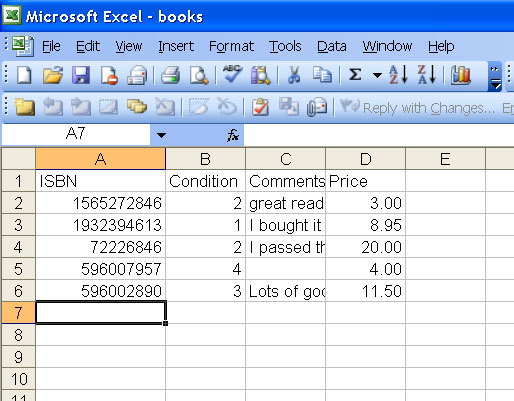Government Advisory Committee Reports on Making Textbooks More Affordable
The Advisory Committee on Student Financial Assistance (ACSFA) submitted a report to Congress on Friday that discussed their findings about the current state of textbook affordability. The one-year study was commissioned at the request of Congressmen Howard P. “Buck†McKeon (R-CA) and David Wu (D-OR) in June 2006 to investigate ways to make textbooks more affordable for students. In the letter requesting the study, the Advisory Committee was asked to:
· Investigate further the problem of rising textbook prices.
· Determine the impact of rising textbook prices on students’ postsecondary education.
· Make recommendations to Congress, the Secretary, and other stakeholders on what can be done to make textbooks more affordable.
The Advisory Committee determined that “all stakeholders—students, faculty, colleges, bookstores, and publishers as well—are victims of the failure of this marketâ€
The Committee found that all stakeholders had valid interests that needed to be protected when making textbooks affordable and so there is no reason to blame any one stakeholder. Instead, the main reason that textbooks are not affordable is “the underlying structural imperfection in the market for textbooks and learning materialsâ€â€”that is, the market is driven by supply instead of by demand. Faculty select the textbooks, the bookstores order them and students must pay for them. The end result is a market that is not driven by consumer demands, which ultimately results in a disregard for product price.
In keeping with its focus on solutions instead of blame, the ACSFA identified short-term solutions and a long-term solution to the textbook affordability problem. The eight short-term solutions are:
1. Strengthen the used textbook market
2. Utilize faculty textbook selection guidelines
3. Provide key information to students and parents
4. Increase library resources
5. Adopt alternatives that lower price
6. Implement a textbook rental program
7. Improve related financial aid policies
8. Utilize 21st century technology
The long-term solution proposed by the Advisory Committee is a national digital marketplace. In theory, the infrastructure of the marketplace would consist of a transaction and rights clearinghouse, numerous marketplace Web applications, and hosted infrastructure resources. The California State University is currently doing innovative work in the area of building such a digital marketplace. The initiative began in 2003 as way to “increase student and faculty success by reducing expenses for educational content, hardware, and software.â€
The CSU Marketplace plans to serve the technological needs of students, faculty, and staff with both no-cost and fee-based educational content. The Advisory Committee hopes that “when fully developed, CSU’s statewide solution can be the first step toward a national digital marketplace for voluntary use by other states, colleges, faculty, and students.â€
CampusBooks.com is following these developments very closely and we’ve made digital textbooks available on our site. The future of the textbook market is fast heading in the direction of electronic textbooks, but in the meantime, CampusBooks.com is helping students save money on books by providing a robust marketplace to buy and sell textbooks quickly and inexpensively.
————————
References
Advisory Committee on Student Financial Assistance, “Textbook Study Fact Sheet.” 2007. http://www.ed.gov/about/bdscomm/list/acsfa/txtbkfactsht.pdf
Advisory Committee on Student Financial Assistance , “Turn the Page: Making College Textbooks More Affordable, MAY 2007.” Textbook Cost Study. May 2007. http://www.ed.gov/about/bdscomm/list/acsfa/turnthepage.pdf


